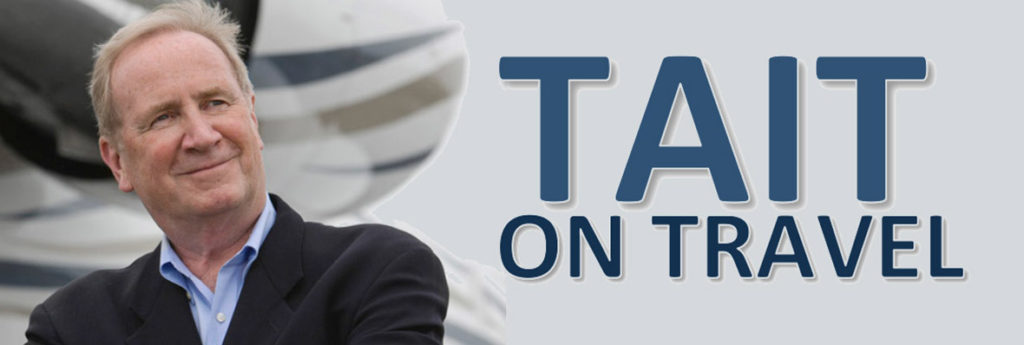Since March 13th of last year, the grounding of Boeing’s troubled 737 MAX has inexorably dragged on and now seems certain to pass the 12-month mark. Even before Boeing admitted last week that – as many industry experts had expected – future MAX pilot training will have to include simulator time, American Airlines had already stated that its MAX fleet (24 aircraft) wouldn’t return to service until April, with United saying it would be no earlier than June.
Of course, getting it into the air is one thing, getting passengers back into the airplane may be another. Given that a deep-rooted fear of flying is one of the greatest human terrors – it ranks second only to the fear of public speaking – this never-ending airworthiness delay has to be stoking the fires of doubt among flyers as to when, or even IF, they will ever be comfortable boarding a MAX. Embarrassingly for Boeing, several whistleblowing employees have gone on record as saying that, even after all the fixes are in, knowing what they know, they wouldn’t put their families on a the airplane.
Paradoxically, feedback from frequent flier friends seems to be that the longer the aircraft remains on the ground, rather than convincing them it will have been fully debugged and be as safe – or safer – than others, it instead has many of them averring they will, “Just say no!” to flying on one.
Infrequent fliers are another matter: While many may never really have tuned in to the whole sorry saga, others will simply say, “I’m not taking my family on one of those 737 airplanes.”
The latter approach of condemning the entire 737 family of jets, has not been helped by reports that Boeing has detected problems with some of its older 737-800’s wing attachments: As of last month, there were a total 7,046 of the 8OO NG’s in service. Also, if that weren’t enough, the missile-induced crash of yet another 737 last week – not something that can be blamed on any aircraft type – can only serve to frighten more people away.
Nonsensical as it may be, I heard one comment of, “That bloody airplane is clearly cursed. You won’t see me on one for a very long time!”
Of course, this is not the first commercial aircraft to have experienced a long grounding and historically consumers have been remarkably resilient with such things. In 1979 the McDonnell Douglas DC-10 was grounded for a little over a month following an American Airlines crash on takeoff in Chicago that killed 271 people. Unlike the MAX situation however, the NTSB quickly attributed the accident to improper maintenance procedures as opposed to any defects in the airplane’s design. At the time though, a month-long worldwide grounding was big news. I was with Laker Airways in Toronto at the time and our fleet was almost entirely DC-10s, so I was ‘up close and personal’ with the passenger reaction. Once the aircraft was flying again however, the whole incident was very quickly forgotten.
As fate would have it, some 21 years later, the DC-10 would play a role in the July 2000 crash and subsequent grounding of the supersonic Concorde. An Air France SST crashed minutes after takeoff at Paris’s CDG killing all 109 on board and four on the ground. Investigators quickly assigned the blame to a metal strip that had fallen from a Continental Airlines DC-10 while taking off on the same runway minutes earlier. The debris burst a tire that then exploded and in turn, ruptured a fuel tank, instantly sparking a fatal conflagration. The iconic needle-nosed Concorde – operated by just Air France and British Airways – was immediately grounded, for what would last almost a year pending modifications to its fuel tanks and electric flight control systems.
If some people today think that the MAX might be cursed, then the Concorde was not exactly smiled upon by the sky Gods. After the mandated mods were implemented, a test flight took place one September morning with a group of British Airways employees on board. The flight went perfectly and everyone was excited that the long grounding was ending. However, tragic events unfolding on the other side of the Atlantic that very same morning would dramatically change the course of events.
As fate would have it, that test flight took place on September 11th 2001 and by the end of the day the entire airspace of Canada and the US would be shut down for several days. As groundings go, in terms of passenger disruption, those few days are still the big daddy of them all. For Concorde however, the post 9-11 air traffic slump suffered by the whole industry, dealt a deathblow to the already shaky demand for expensive supersonic tickets and the one-of-a-kind aircraft was retired just 18 months later. Ironically, in its 34 years of service, until the Paris tragedy, Concorde had been the one of the safest airplanes in the skies, with zero fatalities.
As for the mad MAX saga, time alone will tell how much longer it might take for it to safely return to the skies and only then will we witness how the flying public reacts. I flew on a Laker DC-10 two days after it returned to service, was on a Concorde within a week of its reappearance after a year on the ground and will have no compunction about flying on the MAX when it comes back.
For the record, I must add that I will be infinitely more comfortable flying in a MAX than going anywhere near the pilotless Uber/Hyundai VTOL ‘Urban Mobility Vehicle’ that the JV partners unveiled last week.
But that … is something for another day.

